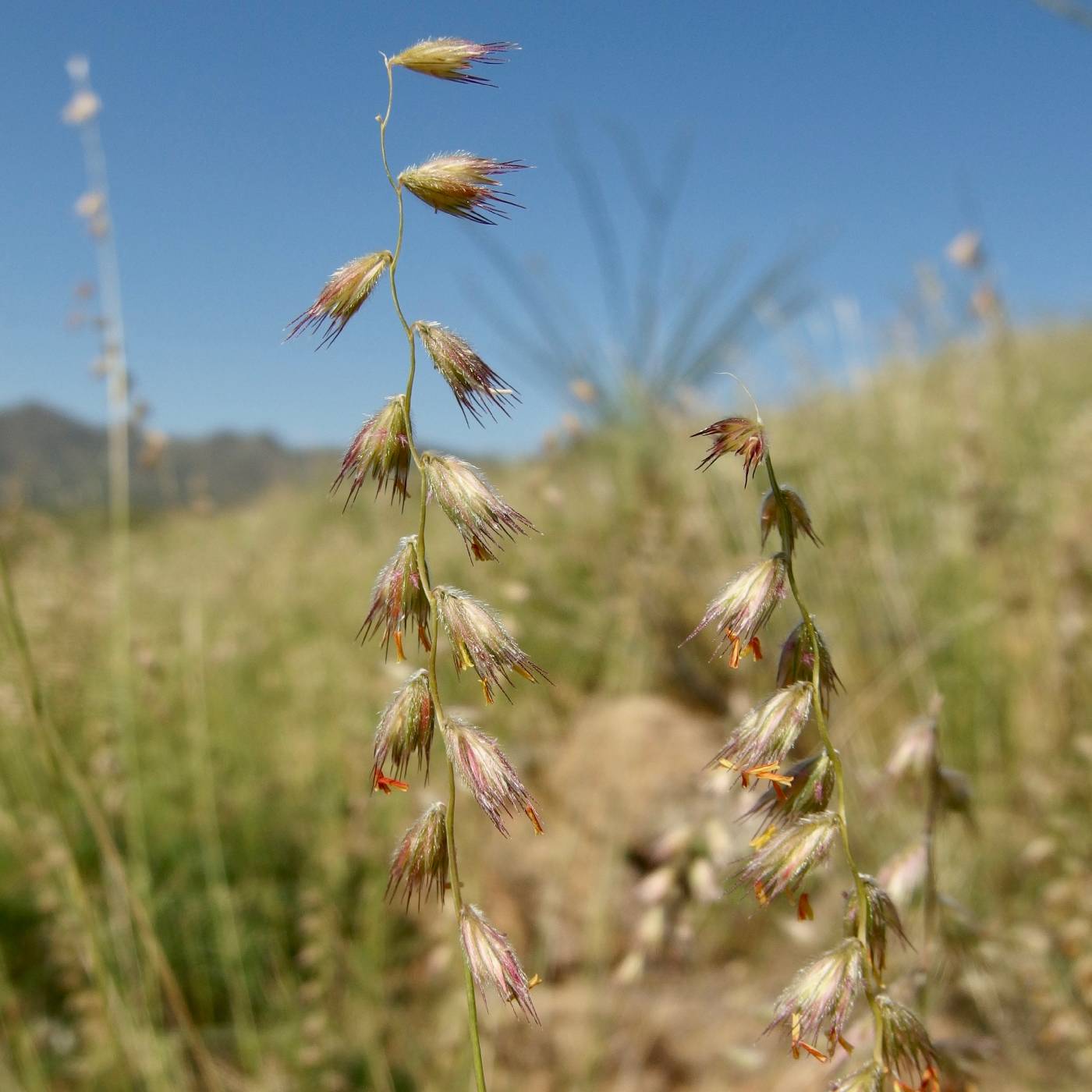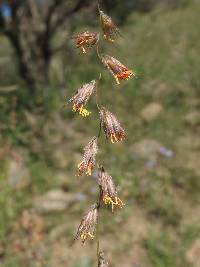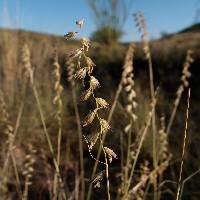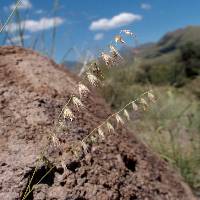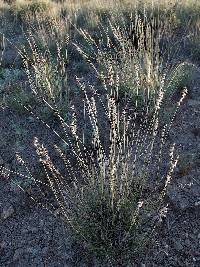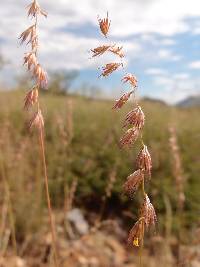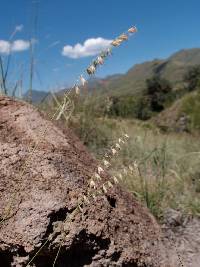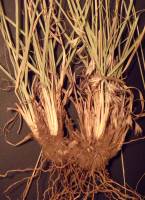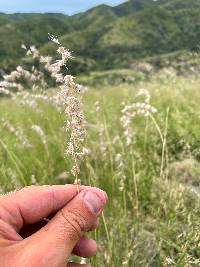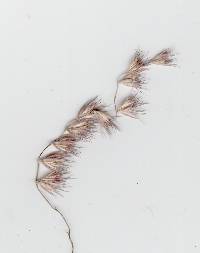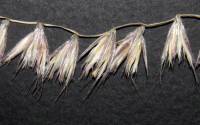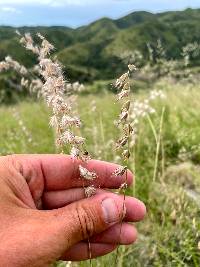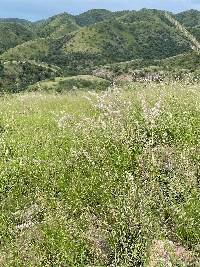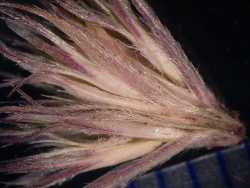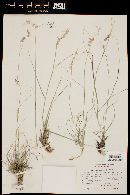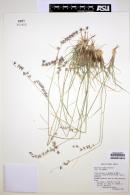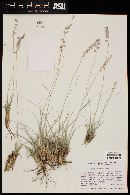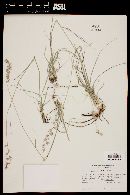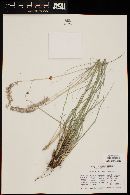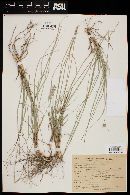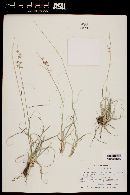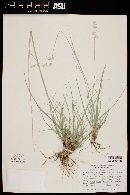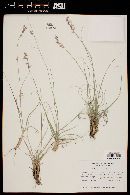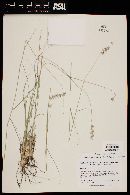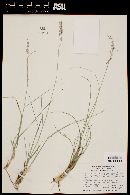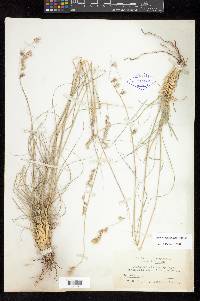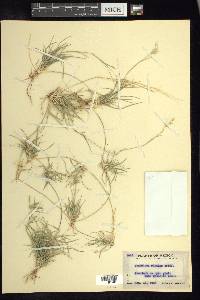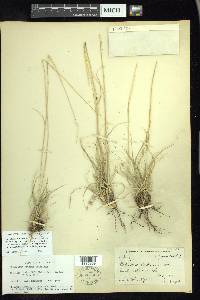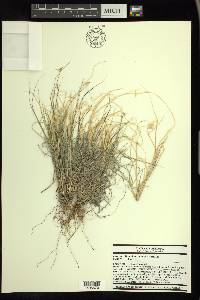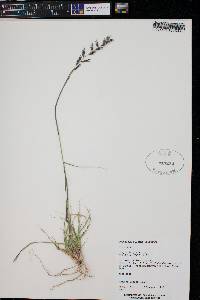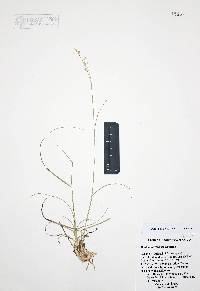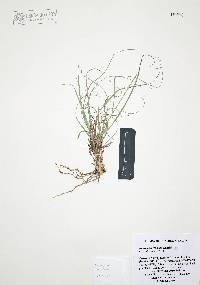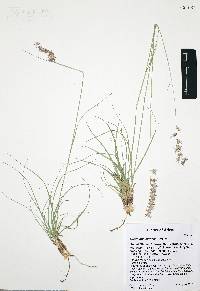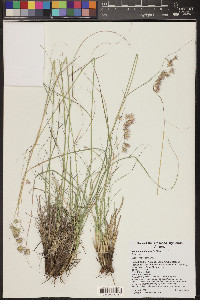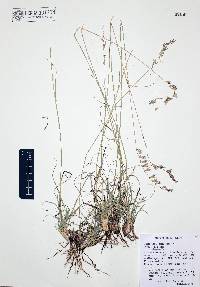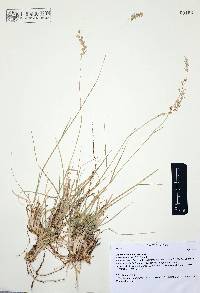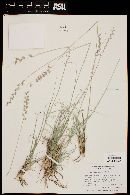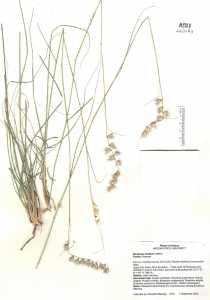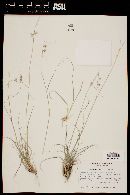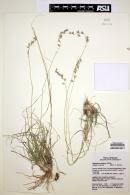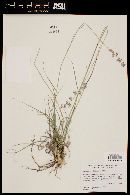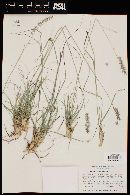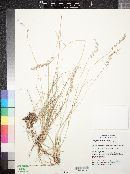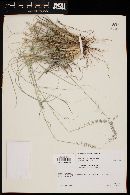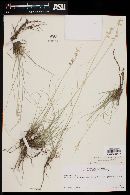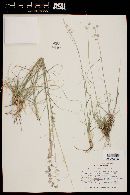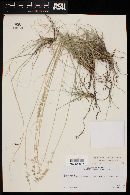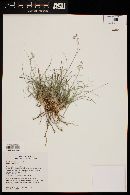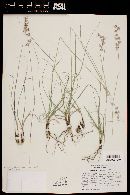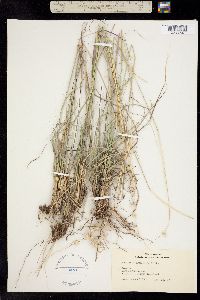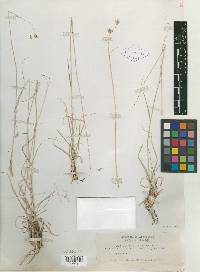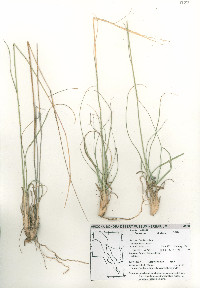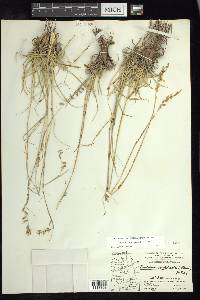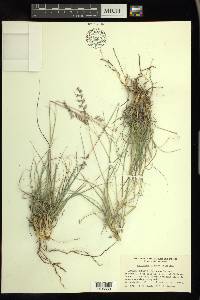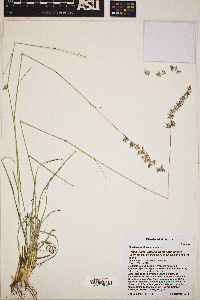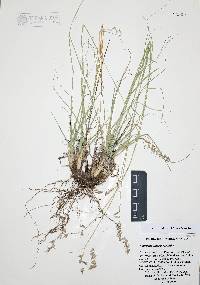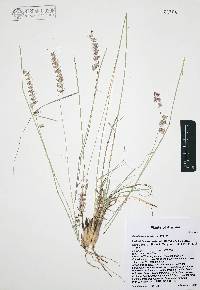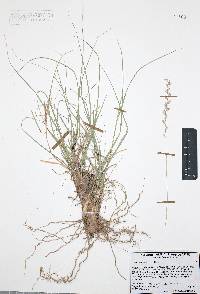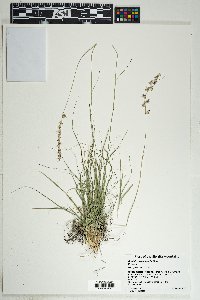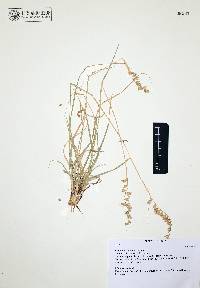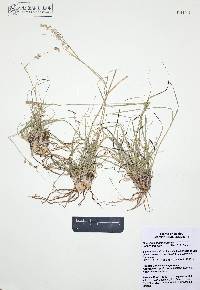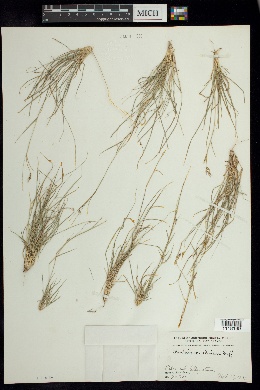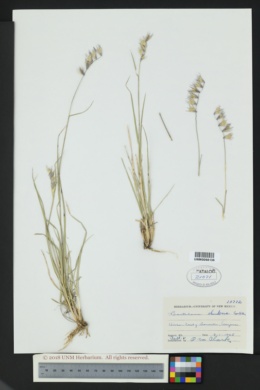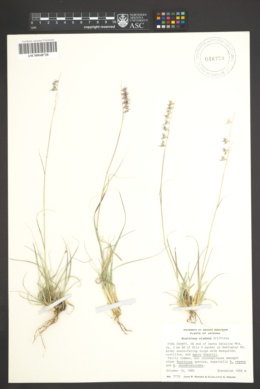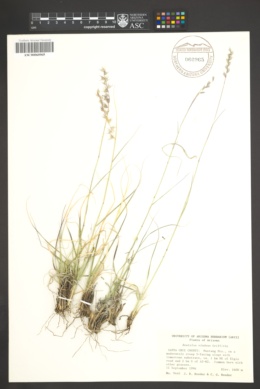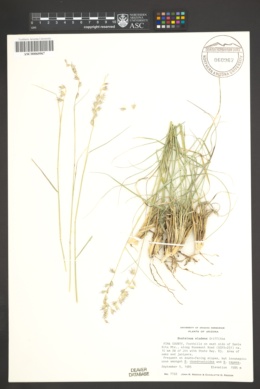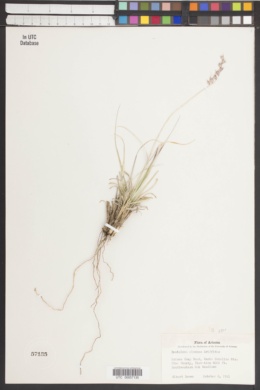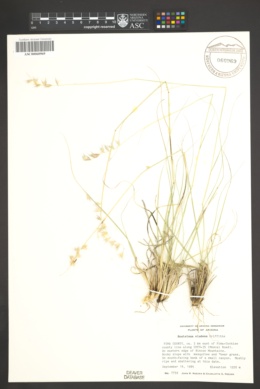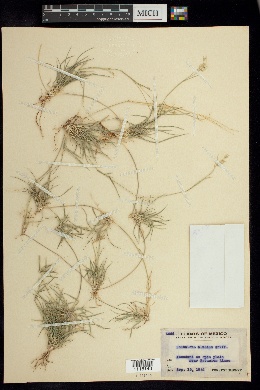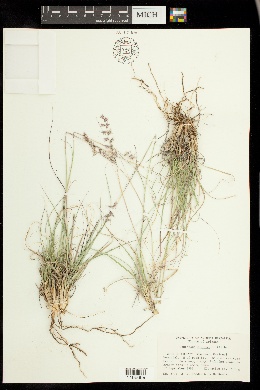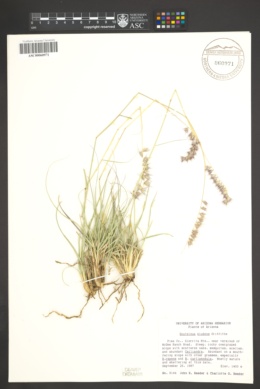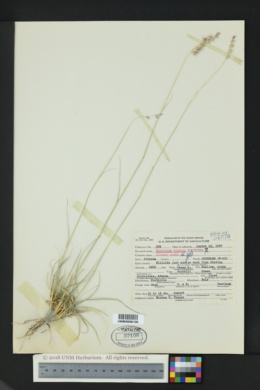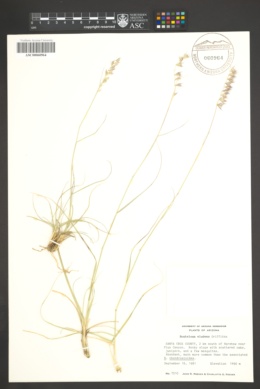Bouteloua eludens
|
|
|
|
Family: Poaceae
Santa Rita Mountain Grama, more...Santa Rita grama, Elusive Grama
|
Plants perennial; without rhizomes or stolons. Culms 20-60 cm, unbranched. Leaves mostly basal; sheaths glabrous or sparsely ciliate near the throat, basal sheaths papery, becoming pale; ligules to 0.5 mm, of hairs; blades to 15 cm long, 1-1.5(3) mm wide, flat, lower leaves variously hispid or scabrous, upper leaves glabrous, with scabrous margins. Panicles 6-10 cm, with (8)12-16(20) branches; branches 5-11 mm, deciduous, pubescent, with (2)4-6 spikelets, axes extending about 5 mm beyond the terminal spikelets, apices entire; disarticulation at the base of the branches. Spikelets appressed, all alike, with 1-2 bisexual florets and 1 rudimentary floret. Glumes silvery-hispid over and between the veins, at least basally, apices acute, acuminate, or shortly awned; lower glumes 5-6 mm; upper glumes 6-7 mm, sericeous over the veins and elsewhere, hairs about 0.5 mm, apices mucronate; lowest florets bisexual, pistillate, or staminate; lowest lemmas 6-7 mm, pubescent between the veins and over the midveins, midveins extending into acuminate or setaceous lobes about the same length as the lateral lobes, not flanked by membranous lobes, lateral veins extending from the lateral lobes for 0.5-2 mm; lowest paleas as long as the lemmas, pubescent, acute to acuminate, unawned; second florets usually staminate, pistillate, or bisexual (rarely rudimentary); second lemmas 8-10 mm; usually well-developed, pubescent, lateral veins extended into 0.5-4 mm awns, midveins extended into a flattened, 1-5 mm awn; second paleas as long as the second lemmas, pubescent, usually with 2 short awns; third florets, if present, pubescent, variable, resembling the second floret, a 3-awned structure with 2 membranous scales, or a prolongation of the rachilla. Caryopses about 5 mm long, about 1.5 mm wide. 2n = 20. Bouteloua eludens grows on dry, rocky slopes and rolling desert flats at 1200-1800 m. It is only known from Cochise, Santa Cruz, and eastern Pima counties in Arizona, adjacent portions of New Mexico and Sonora, Mexico. Although its range is small, B. eludens is not rare. Bouteloua eludens resembles B. chrondrosoides in having pubescent panicle branches, but B. eludens usually has 12-16 branches 5-11 mm long with 2-6 spikelets, whereas B. chrondrosoides usually has 3-8 branches 10-15 mm long with 8-12 spikelets per branch. Bouteloua rigidiseta is also similar to B. eludens, but differs from that species in its glume pubescence and geographic distribution, being only found in Oklahoma, Texas, and northeastern Mexico. FNA 2003, Gould 1980, Reeder and Reeder 1990, Kearney and Peebles 1969 Common Name: Santa Rita Mountain grama Duration: Perennial Nativity: Native Lifeform: Graminoid General: Tufted perennial grass without rhizomes or stolons, often found growing in large stands; stems slender, 20-60 cm, unbranched. Vegetative: Leaves mostly basal; sheaths glabrous or sparsely ciliate near throat; basal sheaths papery, tightly packed, becoming light straw colored in age; ligules of hairs, to 0.5 mm; blades to 15 cm long, 1-1.5 mm wide, flat; lower leaves variously hispid or scab Inflorescence: Panicles 6-10 cm with 12-16 short spicate branches; branches pubescent, 5-11 mm long, with 4-6 spikelets, the axes extending beyond the terminal spikelet; branches deciduous as one unit; spikelets appressed, all alike, each with 2-3 florets; glumes silvery-hispid, acuminate or shortly awned; lower glumes 5-6 mm, upper 6-7 mm; lemma of lower floret hispid, with veins extending into lobes; second lemma with veins extending into short awns up to 5 mm long; 3rd floret rudimentary, variable, not always present. Ecology: Dry, rocky slopes and rolling flats, often on south facing slopes; 4,000-6,000 ft (1219-1829 m); flowers August-September. Distribution: se AZ, sw NM and n MEX. Notes: This species is a part of a group of Bouteloua very similar in appearance being perennials with short inflorescence branches (sometimes appearing as clusters of spikelets) on both sides of the axis which are deciduous as a whole, the branches completely falling off and leaving a small nodule behind. All are distinguished from B. curtipendula by having fewer than 20 inflorescence branches on both sides of the axes. This species distinguished from the similar B. repens by having pubescence on all surfaces of the spikelets and 12-16 inflorescence branches (7-12 in repens). It is distinguished from B. chondrosoides by having panicles 6-10 cm long (3-6 cm in B. chondrosoides) and 12-16 branches (3-7 in B. chondrosoides) with 2-6 spikelets each (8-12 in chondrosoides). It differs from B. radicosa by lacking a hard, knotty, rhizomotous base. Ethnobotany: Unknown, but other species in the genus have uses. Etymology: Bouteloua named for brothers Claudio (1774-1842) and Esteban (1776-1813) Boutelou Agraz, Spanish botanists and horticulturalists; while eludens means elusive. Synonyms: None Editor: SBuckley 2010, FSCoburn 2014, AHazelton 2015 |
|
|
|

